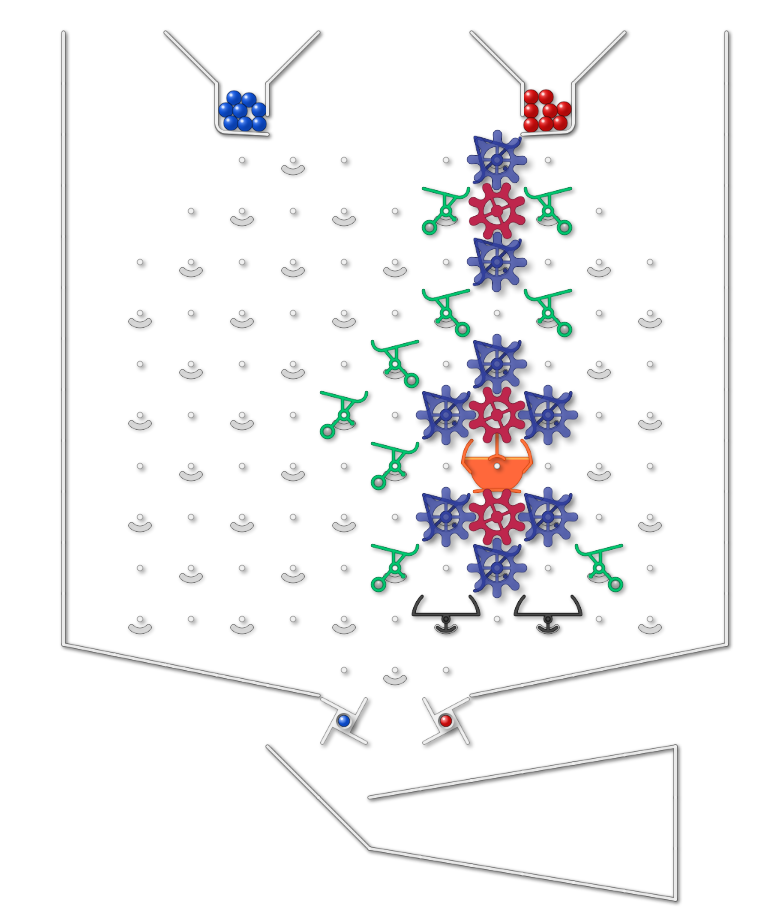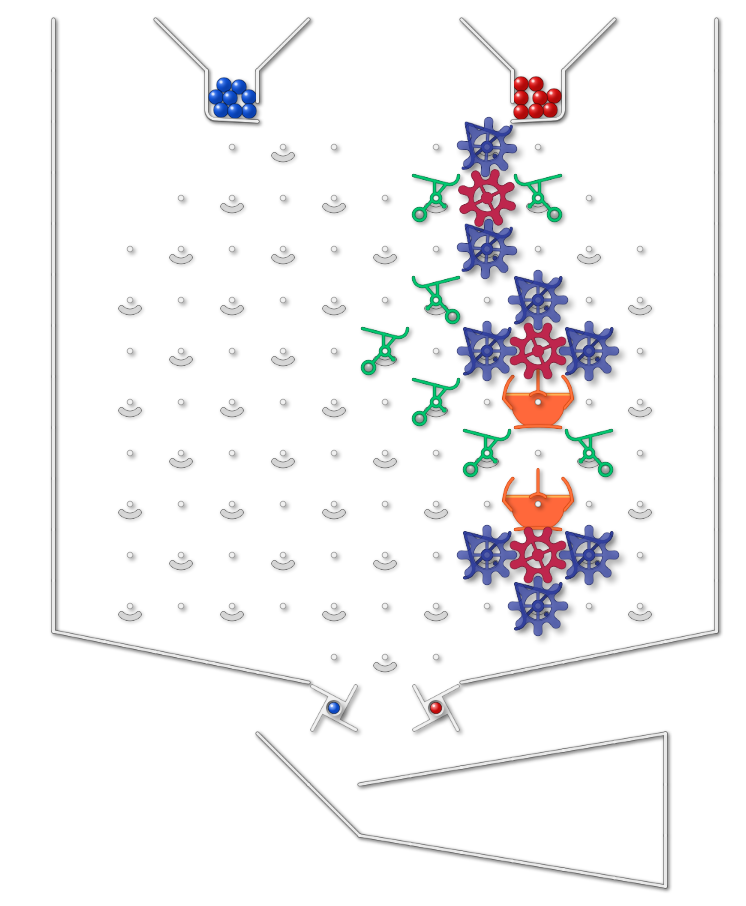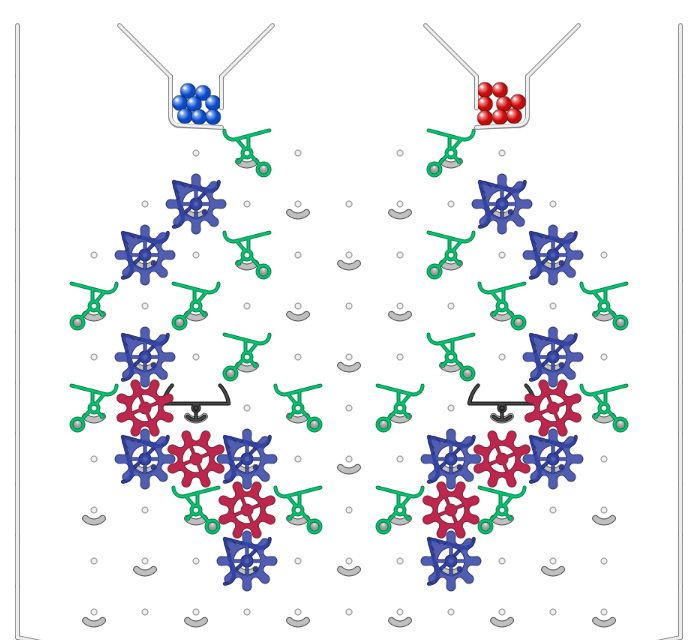(So far I have only been able to do it on a standard sized simulator, because I needed more gear bits than supplied in a standard set).
Set up the board so that the position of a third (gear) bit © depends on the position of another two (gear) bits (A and B). You can manually set the gear bits before running.
When a ball has gone through, C should be the AND of A and B (if pointing to left is taken as “1” C should end as a 1 if and only if both A and B were initially 1 (regardless of what state C was in before). Running another ball with A and B unchanged should leave C in same position).
When a ball goes through, it must leave the position of the A and B bits unchanged.
Taking it further: I haven’t worked out if its possible yet, but would be pleased to see a NAND gate on a standard sized board (possibly with extra bits), and also an AND gate using only bits supplied in physical kit. And of course a NAND gate on a standard physical kit.


